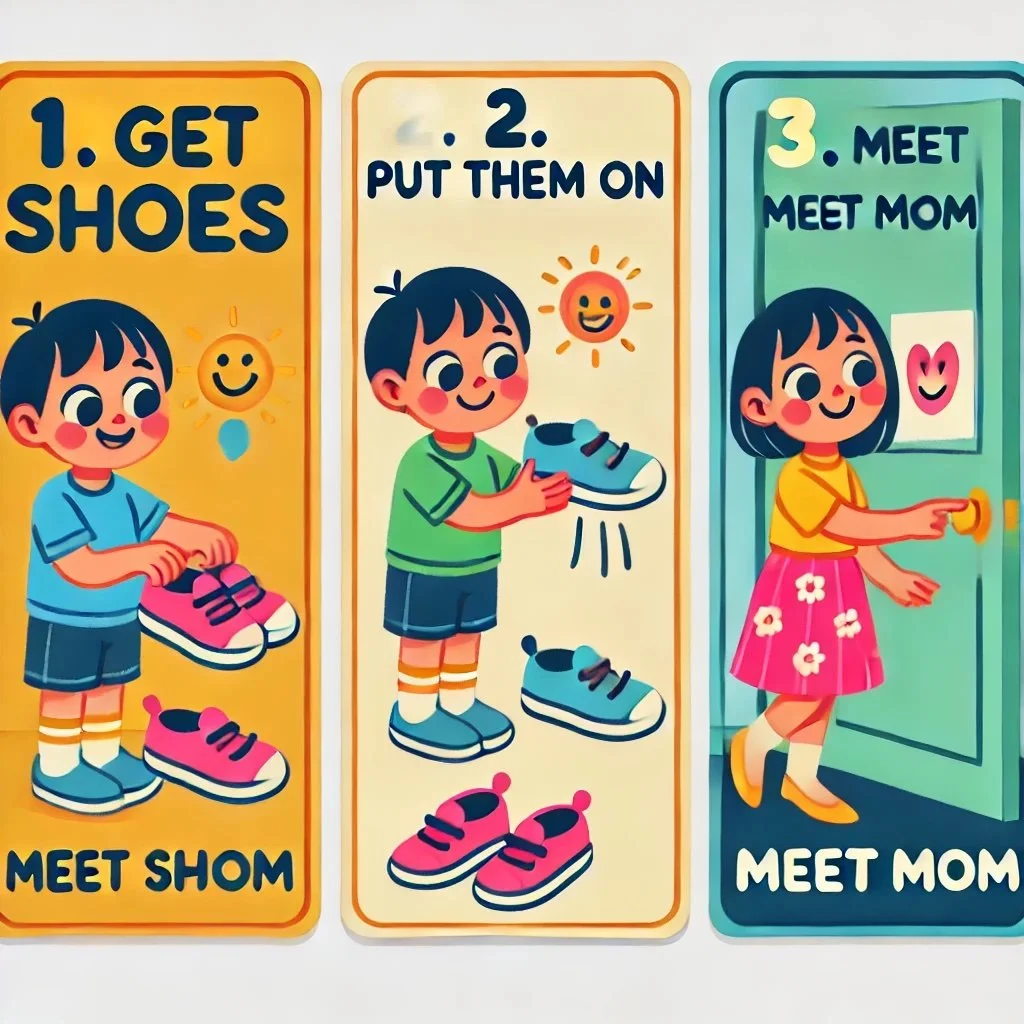Helping Your Child with Trouble Following Directions
Identifying the problem, and knowing where to start.
Helping Your Child with Trouble Following Directions
Have you ever asked your child to “go get your shoes,” only to find them playing with blocks five minutes later?
If so, you’re not alone. Following directions is a skill that develops over time—but for some children, it can be especially challenging. Understanding why your child may struggle, and how to help, can make a big difference in their daily life and success in school.
Why Do Kids Struggle with Following Directions?
There are several reasons a child might have difficulty:
Auditory processing difficulties – They may hear your words but struggle to make sense of them quickly.
Short attention spans – Younger kids or those with ADHD might get distracted before completing the task.
Receptive language delays – Some kids don’t fully understand what you’re asking.
Memory or sequencing challenges – Holding multiple steps in mind can be overwhelming.
Not All Directions Are the Same
Some types of directions are harder than others:
One-step vs. Multi-step
“Get your coat” is easier than “Get your coat, put on your shoes, and meet me at the door.”
Temporal Concepts
Words like first, then, before, after can be tricky for young kids. Most kids don’t grasp the sense of time quickly.
Spatial and Descriptive Language
“Put the book under the table next to the chair” requires understanding position and details.
Step-by-step
Using hand gestures and visual cues can improve understanding and reinforce the direction given.
5 Ways to Help Your Child at Home
1. Break it Down
Give instructions in smaller, manageable chunks. Stick to one direction at a time until they improve.
2. Use Visuals and Gestures
Point, hold up items, or use visual schedules to reinforce what you’re saying.
“I Spy with My Little Eye” can boost visual cues and understanding, too.
3. Repeat and Rehearse
Ask your child to repeat directions back to you—this boosts memory and comprehension.
4. Turn it into a Game
“Simon Says,” scavenger hunts, or obstacle courses build skills in a fun way. Timing them also works well-especially if they are competitive!
5. Use “First, Then” Language
Example: “First clean up the blocks, then we’ll have a snack.” This provides direction, enhances their understanding of time concepts, and also motivates them to complete the task.
Helping your child follow directions
Including step-by-step expectation and direction by asking your child to clean up before they can have a snack will use motivation, help them understand time concepts and help them follow directions.
When Should You Be Concerned?
Reach out to a pediatric SLP if your child:
Regularly struggles with even simple instructions
Has trouble understanding common vocabulary
Is falling behind peers in communication
Early intervention can make a big difference.
Check out our post about addressing the problem early here.
Final Thoughts
Following directions involves listening, understanding, remembering, and processing—all skills that take time and support to develop. With patience, practice, and a little help when needed, your child can succeed.
Have questions about your child’s communication skills?
Contact us today for a consultation—we’re here to help.


